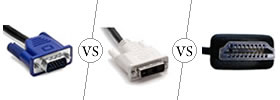Difference between Cloud and SAAS
Key Difference: Cloud refers to a pool of configurable computing resources like networks, servers, storage, applications and services. The pool provides an on-demand access to these resources. The term is widely used in context of new architecture of networked systems that works as an on-demand model. SAAS refers to software as a service. It is an application delivery model based on the cloud architecture. A user rents or borrows the software over the internet through the cloud and uses them for his own purposes.
 Cloud can be defined as an utility which is related to the field of computing. Cloud refers to a pool of configurable computing resources like networks, servers, storage, applications and services that provides an on-demand access to these resources. These servers are associated with various types of services that are provided through the internet. Cloud works as an on-demand model which means that the user only needs to pay for specific services that he requires.
Cloud can be defined as an utility which is related to the field of computing. Cloud refers to a pool of configurable computing resources like networks, servers, storage, applications and services that provides an on-demand access to these resources. These servers are associated with various types of services that are provided through the internet. Cloud works as an on-demand model which means that the user only needs to pay for specific services that he requires.

SAAS refers to software as a service. It is an application delivery model based on the cloud architecture. A user rents or borrows software over the interner and uses them for his own purposes. The actual purchasing and installation of the softwares is not required in this kind of service. It is a flavor of cloud computing. Today, many providers are part of this utility style infrastructure business. A single application is delivered to many customers by using a multitenant architecture. The user can simple avail the services by using a browser. It reduces the upfront investments on servers or software licensing.
Comparison between Cloud and SAAS:
|
|
Cloud |
SAAS |
|
Definition |
Cloud refers to a pool of configurable computing resources like networks, servers, storage, applications and services that provides an on-demand access to these resources. |
SAAS refers to software as a service. It is an application delivery model. A user rents or borrows software over the internet and uses them for his own purposes. |
|
Characteristics |
|
|
|
Types |
|
|
|
Advantages |
|
|
|
Deliverable |
Computing as a utility |
An application as a utility |
Image Courtesy: itconflict.com, smartrecruiters.com









Add new comment